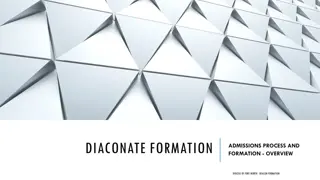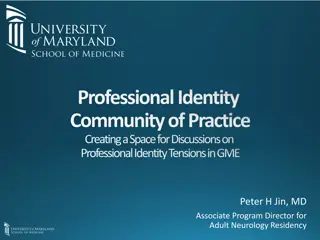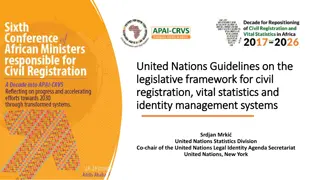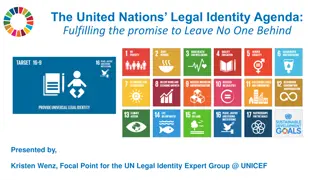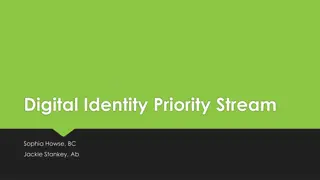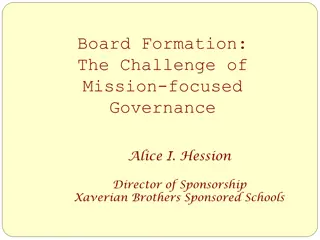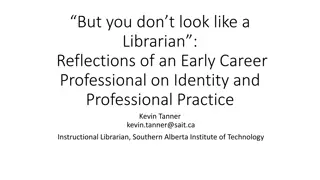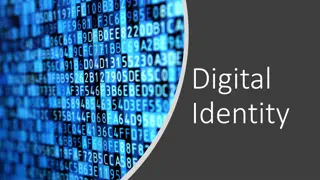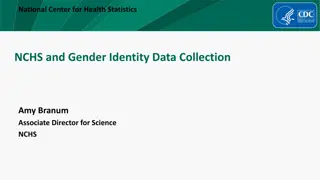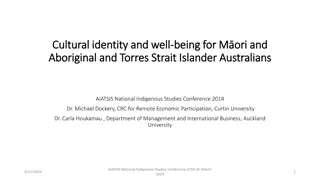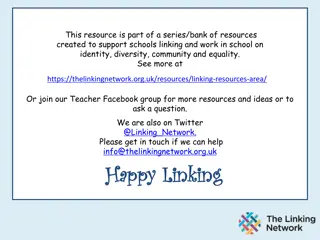Professional Identity Formation Course: Workshop Overview
Empowering professionals with critical thinking skills to navigate diverse environments, this course delves into legal issues impacting communities based on identity and privilege. Featuring a Circle Way discussion method, the program entails module readings, interactive workshops, and rotating leadership roles. Participants engage in reflective assignments and survey feedback, fostering a comprehensive learning experience.
Uploaded on Sep 15, 2024 | 3 Views
Download Presentation

Please find below an Image/Link to download the presentation.
The content on the website is provided AS IS for your information and personal use only. It may not be sold, licensed, or shared on other websites without obtaining consent from the author.If you encounter any issues during the download, it is possible that the publisher has removed the file from their server.
You are allowed to download the files provided on this website for personal or commercial use, subject to the condition that they are used lawfully. All files are the property of their respective owners.
The content on the website is provided AS IS for your information and personal use only. It may not be sold, licensed, or shared on other websites without obtaining consent from the author.
E N D
Presentation Transcript
FOCUS ON TEACHING AND LEARNING WORKSHOP Facilitating Discussion: The Circle Way Prof. Zelda B. Harris Jan. 14, 2021
THE SCHOOL OF LAW PROFESSIONAL IDENTITY FORMATION COURSE PIF Goals: The education and development of professionals prepared to enter the workplace with the tools needed to successfully engage and manage diverse environments with the ability to think critically about various legal issues, problems and solutions and how they impact people and communities differently based on identity, privilege and oppression.
MATERIALS PIF section breakdown Syllabus/Program schedule Module agendas/Circle guides Texts: The Color of Law (Rothstein)/Biased (Eberhardt)/Race Talk (Wing Sue)
PIF SECTION BREAKDOWN 18 students divided into 2 breakout rooms 15 students divided into 2 breakout rooms 1 Lead faculty 1 Adjunct faculty 2 TA s 1 Lead faculty 1 Adjunct faculty 2 TA s 1 Lead faculty 1 Adjunct faculty 2 TA s 1 Lead faculty 1 Adjunct faculty 2 TA s 18 students divided into 2 breakout rooms 18 students divided into 2 breakout rooms
COURSE FLOW 5 week required mini-course (P/F) Each module contains: Reading assignment Reflective homework assignment 30 minute content lecture covering goals and objectives of the module delivered asynchronously by Lead Faculty member Followed by 60 minute workshop using the Circle method Survey of experience after each module
CIRCLE LEADERSHIP ROTATES AND INCLUDES THREE ROLES OF HOST, GUARDIAN, AND SCRIBE. *(SLIDE CREATED BY SARAH-BESS DWORIN) OF SPEAKING & LISTENING? The Host offers the invitation, sets the space, extends welcome, and both participates in and advances group process. The Guardian collaborates with the host to guide the circle process, tending to the energetics of the circle both seen and hidden. Uses the bell to welcome, close, and interject pauses when necessary. The Scribe harvests key moments, ideas, and decision points to create a meaningful record of the group s process. The scribe faithfully maintains confidentiality. www.morningsidecenter.org 6
THE CIRCLE TOOLS: SETTING THE CONTAINER OF INTENTION The Centerpiece The Talking piece The Agreements Online circle chart
Inez Bob Richelle Elaine Melinda Eliana Victor Regina Sonia Blane Evan Mary Eugene Roger Marie Denise 1 0 1 1 1 0 1 0 1 1 1 1 1 1 1 0 1 1 1 0 1 0 1 1 1 1 1 0 1 0 1 0 1 1 1 1 1 1 1 1 1 Roger Inez Eugene Bob Mary Richelle Evan Elaine Blane Melinda Sonia Eliana Regina Victor
THE AGREEMENTS Offer your authentic presence Presume good intent; honor and assume impact Acknowledge multiple truths Use agreed upon signal to indicate intentional or unintentional harm ( flag on the play ) Stories stay, lessons leave
THE AGREEMENTS Trust that you will take what you need from this experience Norms for online meetings: i. Mute audio when not speaking ii.Turn on video when possible; turn off your video if you need to leave the room iii.Use of other functions: Chat? Screen share?
The Facts Sam lives in a two-bedroom apartment in the North Lawndale neighborhood with their 13-year-old brother and their maternal grandmother Sam had a primary job at an accounting firm and a part-time job at a restaurant Sam was furloughed from the primary job and lost the part-time job due to the COVID-19 pandemic
The Issue Sam contacts you because an eviction notice from KLM Property Management Company stating that Sam must vacate the premises within 30 days or be locked out of the unit due to reoccurring non-payment Sam also read this article Despite coronavirus eviction ban, some Chicago landlords are locking out tenants
CONTENT ROUND PROMPTS How do you go about setting up your meeting with your client? What will you want to address and talk about in the initial meeting? How will we build rapport with your client? What gender identity did you ascribe to Sam? What sexual orientation did you ascribe to Sam? What race or ethnicity did you ascribe to Sam? What, if anything, did you think about Sam s family situation? What if you were told that Sam is Black Transgendered Would you change the way to set up your first meeting based on those additional facts? Would you change the types of questions and issues you would want to discuss?
FACILITATING CIRCLE DISCUSSIONS Opening large zoom room Check in Large zoom room Content rounds Breakout rooms Micro-circles Reflection Large zoom room Closing - large zoom room
FACILITATING DIVERSITY DISCUSSIONS* (SLIDES PREPARED BY PROF. CARLA KUPE, PIF PROGRAM DIRECTOR) Meet everybody where they are at Clarify the goals of each discussion (keep focus on track) Keep naming and asking how is race playing a role ?/ how does race matter? Create a setting on non-judgment/safe space Watch for coded language and explore it when it occurs
FACILITATING DIVERSITY DISCUSSIONS* (SLIDES PREPARED BY PROF. CARLA KUPE, PIF PROGRAM DIRECTOR) Personal anecdotes are tricky Mine it for nuggets that can be digested by all participants Watch your own reactions to the story (especially when generalizations are being stated) Is the speaker using/misusing their own experience as authority? Remember that the speaker is taking a unique risk manage any strong reaction to maintain this as a safe space Stay uniform on how personal stories are being unpacked
MANAGING PROBLEMATIC SITUATIONS* (SLIDES PREPARED BY PROF. CARLA KUPE, PIF PROGRAM DIRECTOR) Rely on your co-facilitators. Utilize each others strengths. Take time to address problematic behaviors/attitudes Watch for signs of unease/anxiety and give opportunity to exit If a particular voice continues to dominate/disrupt, use creative ways to diffuse and later report to lead faculty to address it Employ a variety of engagement strategies (scenarios, writing, reading, discussion, etc.) Insert yourself into any heated small groups to manage emotions and reactions
DE-BRIEF & REPORTING BACK De-brief with each other after each session (i.e. opportunities to improve, shine, and adapt) Report back to us any concerns, issues, and feedback after each session



